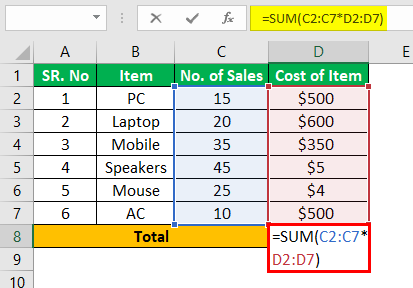
Shift+F9: Perform calculations on the active worksheet.Refreshing the workbook performs new calculations on all formulas. While in this mode you can use arrow keys or your mouse to add non-adjacent cells to your currently selected cells. Shift+F8: Turn the “Add to Selection” mode on and off.While in this mode, you can use your arrow keys to extend or reduce the current selection of cells. F8: Turn the extend selection mode on and off.If you have a word selected when you press this combo, Excel opens the thesaurus and looks up the selected word. F7: Perform spell check in the selected range.Ctrl+Shift+F6: Switch to the previous workbook window when you have more than one workbook window open.Ctrl+F6: Switch to the next workbook window when you have more than one workbook window open.In a worksheet that has been split, this combo moves you to the previous pane. Shift+F6: Move in reverse order between the Ribbon, worksheet, tabs, and status bar.In a worksheet that has been split, this combo moves you to the next pane. F6: Move between the Ribbon, worksheet, tabs, and status bar.Ctrl+F5: Restore the window size of the active workbook window.Shift+F5: Open the Find And Replace window.F5: Open the Go To window where you can jump to a named range or address.This closes all open workbooks (giving you the chance to save changes first) and exits the program. Ctrl+F4: Close the current workbook. You’ll be asked to save the document if you’ve made any changes.Ctrl+Shift+F4: Work the same as Shift+F4 but works toward the beginning of the document.This one’s handy because you can use it to browse search results without having the Find and Replace window open. Shift+F4: Repeat the last find action.If you have a cell reference or range selected when you hit F4, Excel cycles through available references. Ctrl+Shift+F3: Open the Create Names From Selection window, which lets you create new names using selected rows and columns.



If editing is disabled for a cell, this combo moves your insertion point into the formula bar instead. F2: Turn on editing in the cell and places your insertion point at the end of the cell’s data.Alt+F1: Create an embedded chart from data in the currently selected range.This gives you something like a full-page view of your sheet. Ctrl+Shift+F1: Hide and unhide the Excel Ribbon, the title bar, and the status bar at the bottom of the window.Ctrl+F1: Hide and unhide the Excel Ribbon.This is the case most of the time when you press F1 while a dialog box is open. Sometimes, though, pressing F1 takes you to Microsoft’s support site and shows you more targeted articles about the feature you’re looking at. F1: Get help. How this works depends on what you’re looking at in the Excel window. Press F1 in the regular window, for example, to open the Help pane.


 0 kommentar(er)
0 kommentar(er)
